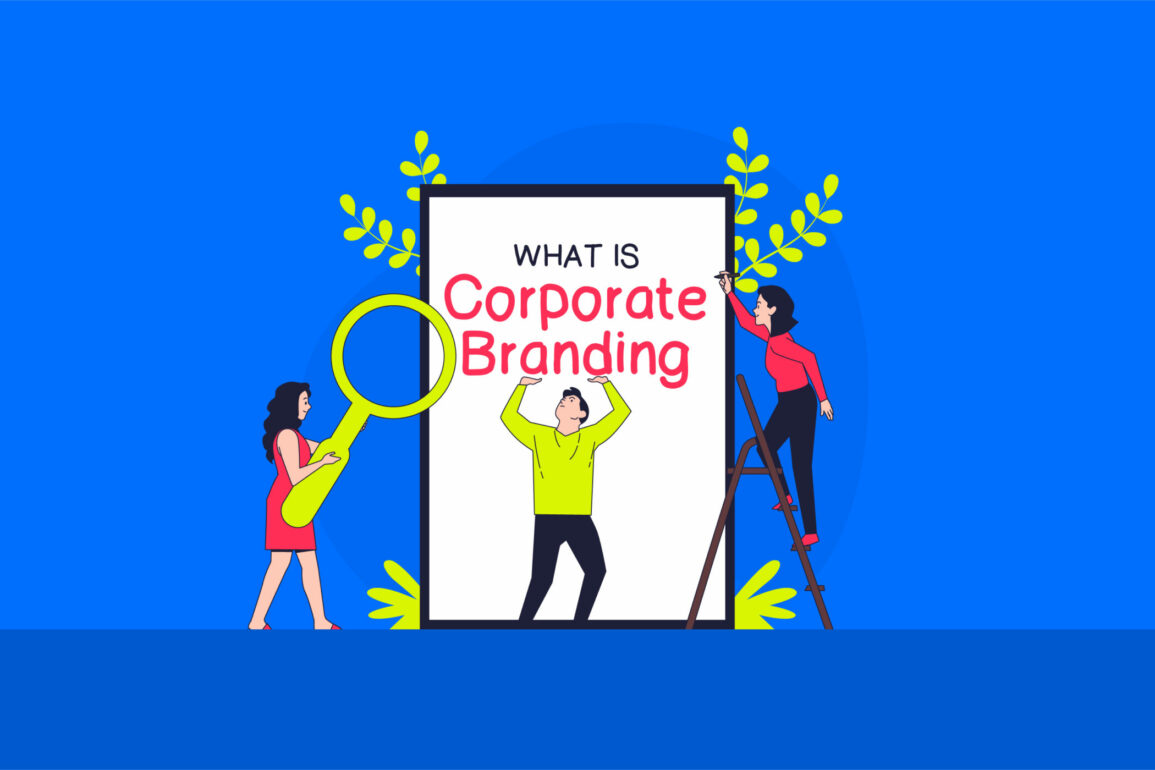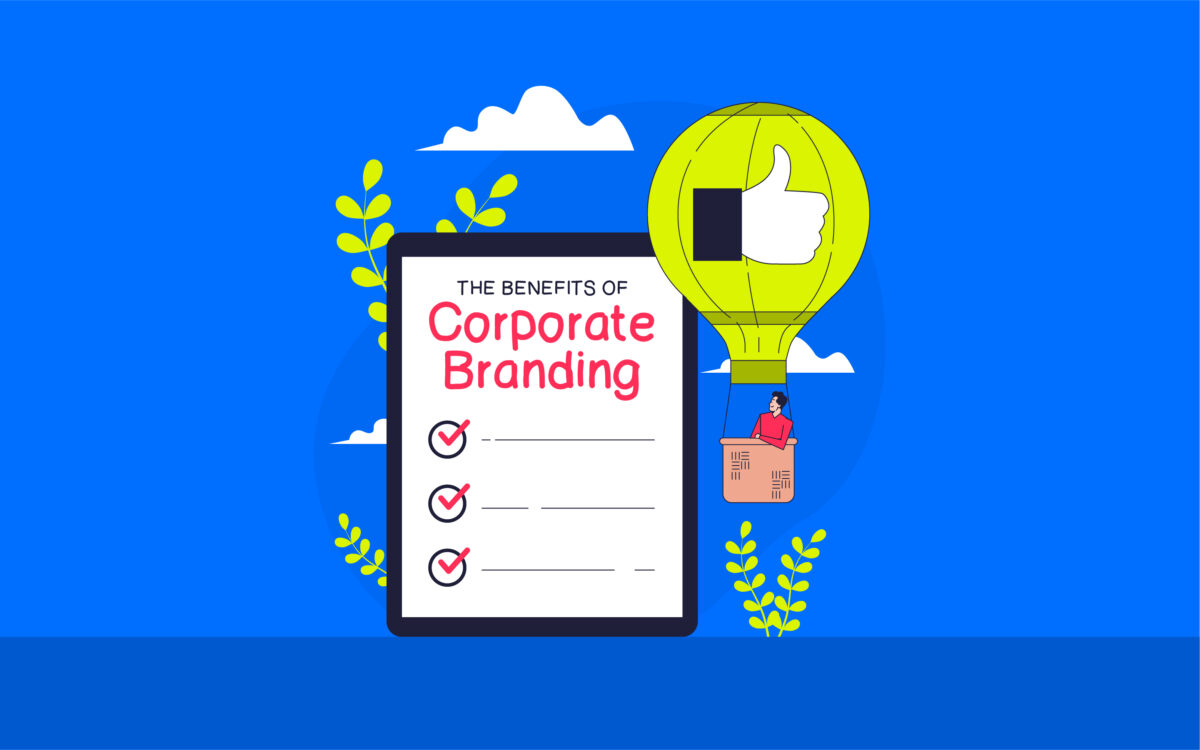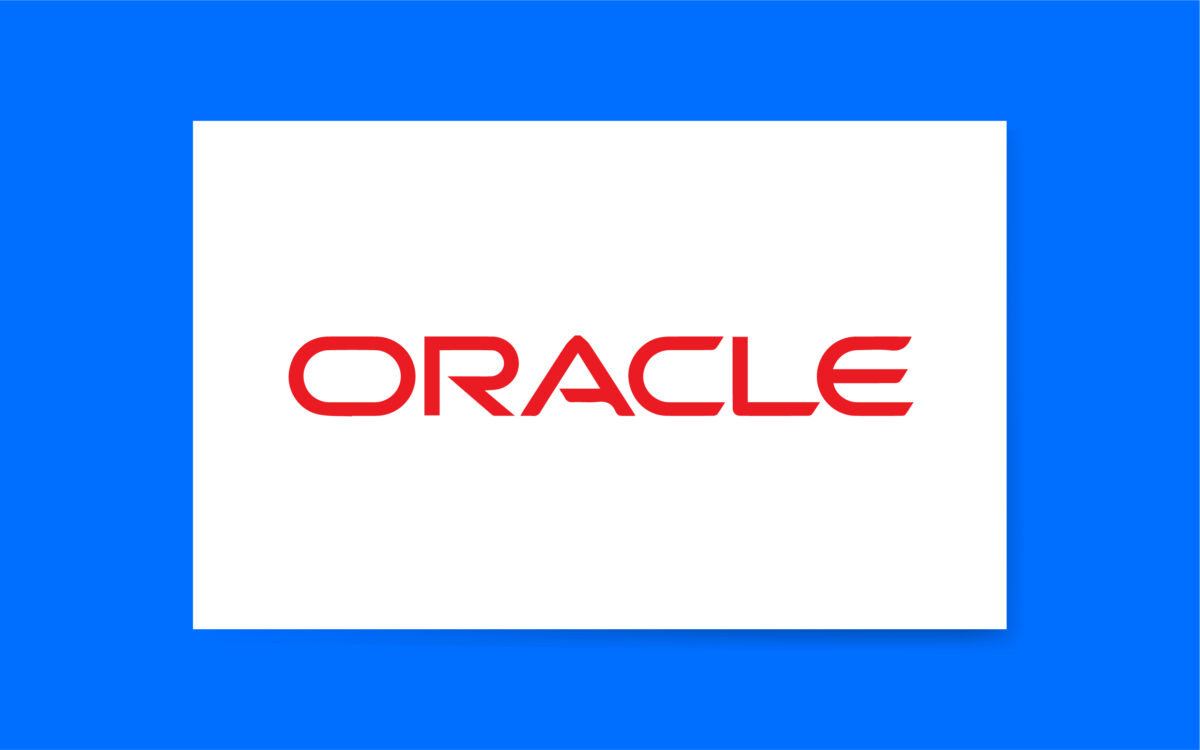What is corporate branding? The essential guide

What is corporate branding, and why is it so essential to capturing market share and revenue? More than just your name, logo, or color schemes, a corporate brand combines everything that makes your organization unique and impactful in its industry.
The right corporate brand identity aligns your business with potential customers on a deeper level.
Consider how organizations like Google and Oracle are perceived in the modern market. They’re seen as leaders, innovators, and authorities in their space because they’re built on the foundation of a strong corporate brand.
Corporate branding helps companies establish themselves in their chosen industry, attracting new customers and retaining their existing clients.
In general, branding allows organizations to align their marketing materials, assets, and messaging strategy around a clear value proposition, visual identity, and voice.
Today, we will explain exactly what corporate branding is and the steps involved in building an effective corporate brand, with examples.
What is a corporate brand? Corporate brand definition
Let’s start with the basics: what is a corporate brand?
Fundamentally, a brand is the core essence of a company. It’s everything that differentiates your organization from its competitors and connects with your audience on a deeper level. Your product choices, tone of voice, logo, and packaging choices all makeup aspects of your brand.
However, there are different “types” of brands that companies can create to achieve specific goals. For instance, perhaps the most common type of brand is the consumer brand, an identity built to connect specifically to a customer.
Consumer brands use product branding methods to align their services or solutions with the specific needs and interests of their customers, usually in the B2C landscape.
Coca-Cola, Dove, and Nike are all excellent examples of brands that showcase their core values to consumers in the B2C world through a carefully constructed visual identity and personality.
Employer brands, on the other hand, aim to capture the attention of staff members, showcasing the benefits they can deliver to team members and their commitment to their employees.
Perhaps the core defining element of a corporate brand is its intended customer. A corporate brand typically focuses on a business-oriented target audience. Corporations like Unilever, Oracle, and Procter & Gamble all aim to sell their items to other businesses.
As such, they showcase their company’s mission and vision in different ways to the standard consumer brand.
Typically, corporate brands focus heavily on demonstrating how they can support other organizations. They build their identity with a focus on how their solutions can deliver benefits both to a company and its end users or customers.
What is corporate branding? The definition of corporate branding
So, what is corporate branding?
In simple terms, corporate branding is the art and science of building an identity that resonates with a specific audience in the B2B environment. The scope of a corporate brand goes beyond simply showcasing specific products or selecting the right logo design.
Corporate branding looks at how an organization presents itself to the world (and its target market). It involves a close focus on the values, vision, and mission of a company and what it can offer or promise its customers. Every aspect of a company can influence its corporate branding.
The Unilever brand chose a logo that conveys the scope of its product collection and highlights trust and credibility through the color blue. The organization also regularly promotes content highlighting its brand values, such as sustainability and ethical growth.
Even a company’s employees can influence its corporate brand identity. The way team members interact with customers, the language they use, and even how they present themselves online and offline will influence how other people perceive a company brand.
A strong brand relies on a company’s ability to use everything from carefully-chosen symbols and brand photography to powerful messaging to resonate with the needs, ideals, and pain points of its target audience.
The world’s most successful companies are built on strong brand identities, capable of making an emotional connection with the right audience.
What is the overall goal of effective corporate branding?
The purpose of effective corporate branding is to position a company as the right solution for a customer’s needs. The name of a company, its individual products, style guide, and visual language all help to create an image in a customer’s mind of what that business can do.
With corporate branding, organizations in the B2B landscape convince other businesses that they can deliver the right results better than any other competing business.
Apple encourages people to “think different” in its corporate branding strategy. Its message to customers positions it as an innovator and thought leader in its field. The company focuses not just on creating high-tech, luxury products with innovative features but also on user experience.
Apple products are designed to be easier to use than competing solutions, and Apple builds on this convenience by providing customers with access to experts who can always assist them with fixing problems as quickly and efficiently as possible.
Deloitte positions itself as a market leader in the technology field with a sleek, sophisticated logo, carefully chosen color scheme, and a commitment to producing educational content. The company doesn’t just consistently highlight its individual products.
It focuses on informing and enlightening its audience with research, reports, and even industry events.
Used correctly, corporate branding influences how people perceive a company, what kind of emotions they feel when interacting with a brand, and how they compare that organization to competitors.
The benefits of good corporate branding
So, what is corporate branding used for in the business world?
In simple terms, a company’s corporate brand identity is how organizations manipulate the first thing customers think and feel when interacting with a company. Major corporations throughout the world focus on their brand identity when making any strategic decision.
When producing a marketing strategy, companies like Microsoft determine whether their campaign aligns with the mission statement they’ve chosen for their organization and their brand essence.
Microsoft creates events and expos which showcase its latest products while also drawing attention to values like inclusion, social responsibility, and ethics.
When companies like PWC choose to shorten their name and update their color palette and logo, they do so to push their businesses in the right direction, strengthening connections with existing customers and boosting their chances of reaching new markets.
A successful corporate branding strategy:
Defines and clarifies the vision of a company
Successful corporate branding keeps an entire company on the same page about the goals and purpose of an organization. Businesses aren’t just built to make a profit. They aim to do something specific for their customers.
For instance, Microsoft wanted to make itself a part of the digital revolution and, as such, built its brand around creating inclusive, easy-to-use products for consumers and companies alike.
Differentiates organizations from the competition
Every company has competitors, no matter how unique their products or solutions might appear. When consumers decide which company to purchase products from, they don’t just think about the features of the solution or the company’s logo.
They consider how the organization makes them feel. Successful branding separates organizations from their competitors by highlighting employees as industry experts or showcasing a commitment to excellent customer experience.
Creates connections with customers
Corporate branding helps to transform an organization from just another “vendor” into a reliable partner for a company. It showcases the human elements of a business, such as its commitment to ethics, its approach to sustainability, and the passions of its employees.
A well-defined brand influences what customers think of when they connect with a business. For example, PWC is associated with reliability, convenience, and thought leadership.
Raises company awareness
Corporate branding influences how the image of a brand, its messaging, and other factors create a space for the company in the mind of clients. It helps to create a consistent identity, which builds familiarity with customers and enhances recognition.
Building a recognizable brand requires companies to carefully choose consistent design elements and marketing strategies which constantly demonstrate the values of the business, its accomplishments, and its capabilities.
Improves marketing efforts
A good branding strategy also simplifies marketing and promotional strategies for a business. Brands use consistent color palettes, memorable phrases and slogans, and effective messaging to highlight their core essence.
Corporate branding can help organizations use more effective content in their ads, social media posts, and other assets by providing them with clear personality guidelines.
The elements involved in building corporate brand identity
As mentioned above, building a corporate brand consists of aligning various distinctive and defining elements in a company. Things like logo design, brand mission, messaging, and positioning are just some of the puzzle pieces that come together to make up the full image of a brand.
When developing a corporate brand identity, companies need to consider every factor that might affect their corporate reputations with buyers, investors, employees, and stakeholders.
Some of the steps involved in building a corporate brand identity include:
1. Defining the company’s goals, vision, and mission
The first step in any branding strategy involves defining the purpose of a business or the “why” behind a company.
While the primary goal of any organization might be to make a profit and earn consistent revenue, your goals, vision, and overall mission outline how you’re going to achieve that goal by delivering a specific type of value to customers.
Corporate brands need to identify how their company’s product or solution is going to address a specific need in the marketplace in a uniquely valuable way.
IBM doesn’t just produce technology and deliver consulting services. It helps companies to grow by giving them access to expertise and support based on years of research and careful development.
The vision and mission of a company are what help organizations resonate with their target audience. A strong vision turns a customer into a brand ambassador, ready to support the company in its growth initiatives and share its solutions with others.
2. Understanding the target audience
To deliver a positive experience to end customers, brands of all types need to understand what their customers actually want and need. Look at Apple, for instance. When the company first emerged, its aim wasn’t just to produce mobile phones and computers.
It wanted to provide consumers with a simpler, more efficient way to access technology. The company built its identity based on a clear need in the marketplace for high-quality solutions which minimized complexity.
Since corporate brands can often sell various products to different kinds of consumers, from small businesses to large enterprises, they often develop numerous user personas, allowing them to adapt their messaging and product design to each segment.
However, they also understand the over-arching needs of their niche customers.
Dropbox offers different services to a range of companies, but its overall goal is to help its audience with the core issue of managing, sharing, and storing data in the cloud.
3. Analyzing competing companies
One of the core benefits of a strong corporate brand is it allows companies to differentiate themselves from the other organizations in their space offering similar, high-quality solutions.
Product and service brands in the corporate space carefully analyze their competitors to determine how they can separate themselves from the solutions already available in the market.
Using strategies like SWOT analysis and competitor research, business leaders determine “gaps” in the market where they can achieve the best results.
For example, the Wix website-building platform noticed that many of the software solutions used to build sites were often complex and required access to coding expertise. As such, they chose to build a simpler product, which eliminated the need for coding using AI and simple frameworks.
Analyzing competing companies allows organizations to define what they need to do differently to provide customers with the value they can’t get elsewhere. Distinct brands consistently monitor the activities of their competitors to help them make decisions on how to grow and transform.
4. Developing brand guidelines
One of the most important elements of building a good corporate brand strategy is consistency. Organizations need to deliver the same message, image, and tone of voice across all channels to be deemed trustworthy and credible.
This often involves developing crucial documents or guidelines which all members of staff, as well as contractors and third parties, can use when building assets for a brand.
Brand guidelines can outline everything from a brand’s purpose and mission to the tone of voice it should use in marketing campaigns and statements.
Corporate brands also create style guides that help to preserve their image across multiple channels. An executive team may also create editorial guidelines, which highlight how companies should showcase a company’s value through advertising campaigns and digital marketing efforts.
5. Producing corporate brand elements
Using core elements of a brand’s identity, from its mission to its central vision, companies then develop assets intended to connect with a specific target audience. Notably, the essential elements of a corporate brand can include a number of different things.
Not only will you need to define how you’re going to showcase your brand through your logo and color palette, but you’ll also need to think about things like your product packaging, your marketing campaigns, and the way you interact with your target audience.
Even the training provided to your employees can make a huge difference to your corporate brand’s reputation. The way your team members interact with consumers and deliver customer service will influence how people think and feel about your organization.
Effective examples of corporate branding
Sometimes, the easiest way to answer the question: “what is corporate branding?” is to look at examples of other organizations that have already developed a high-quality brand. In virtually every industry, there are fantastic examples of corporate brands to learn from.
In your sector, you can probably think of a few organizations that have successfully cultivated loyal customers, and a positive reputation, through the careful use of branding.
Here are some good examples of corporate branding to inspire you:
Oracle
The American multinational technology company, Oracle, positions itself as a leader in its industry by investing in extensive research and development strategies.
It not only advertises its products and services regularly but focuses heavily on developing thought leadership through the use of articles, whitepapers, case studies, and events, all built to showcase knowledge.
Oracle produces a host of resources for customers, all aligned with the same tone of voice, intended to make complex concepts simple. The brand also frequently champions its customers, highlighting its credibility by sharing success stories from relationships with other brands.
Even the name of the company, “Oracle,” helps to establish the brand as a forward-thinking, insightful organization.
Procter & Gamble
Manufacturing company Procter & Gamble builds its identity around trust. It’s a human-focused brand that regularly uses images from real consumers in its promotional methods.
Even the organization’s logo, with its combination of blue and white in the color palette, conveys reliability, credibility, and honesty. The brand consistently commits to showcasing its identity as a caring organization, with sustainability initiatives and partnerships with non-profit organizations.
By focusing on how its products improve the world and support humanity, Procter & Gamble ensures it’s seen as more than just a huge corporation responsible for multiple sub-brands.
Accenture
With a name taken from the words “Accent on the Future,” Accenture immediately began building a brand identity with a focus on innovation. Even the company’s logo, with its purple arrow pointing towards the right, showcases its vision of the future, growth, and development.
Accenture’s mission revolves around delivering on the promise of both technology and human ingenuity. As such, the company commits to empowering others with both innovative tools and exceptional consulting and support services.
The brand positions itself as an adventurer, constantly looking for new ways to benefit its target audience. Even the organization’s products and services are constantly updated and enhanced based on trends in the industry.
Developing an effective corporate brand
Hopefully, by this point, you’ll be able to answer the question: “What is corporate branding?” In simple terms, corporate branding is all your strategies and methodologies to separate your organization from the competition and highlight your unique values and vision.
A corporate brand is more than a name, logo, and color palette. It’s everything that helps customers to define who you are and what your business stands for. Building a corporate brand isn’t just something organizations do when launching their business.
Corporate branding is a consistent and dynamic process. It requires organizations to constantly evaluate their marketplace, competitors, and target audience, pay attention to their reputation in their industry, and adapt when necessary.
Working with a brand strategist or branding team like Fabrik can help if you’re struggling with developing your own corporate brand.
We’ll help you to define the core elements of your corporate brand identity, update your existing strategies, and maintain a strong relationship with your customers.
Fabrik: A branding agency for our times.

We’ve built our reputation, building brands for other people.
Do you need to bring a new brand to life or breathe new life into an existing one? If so, let’s start a conversation
























